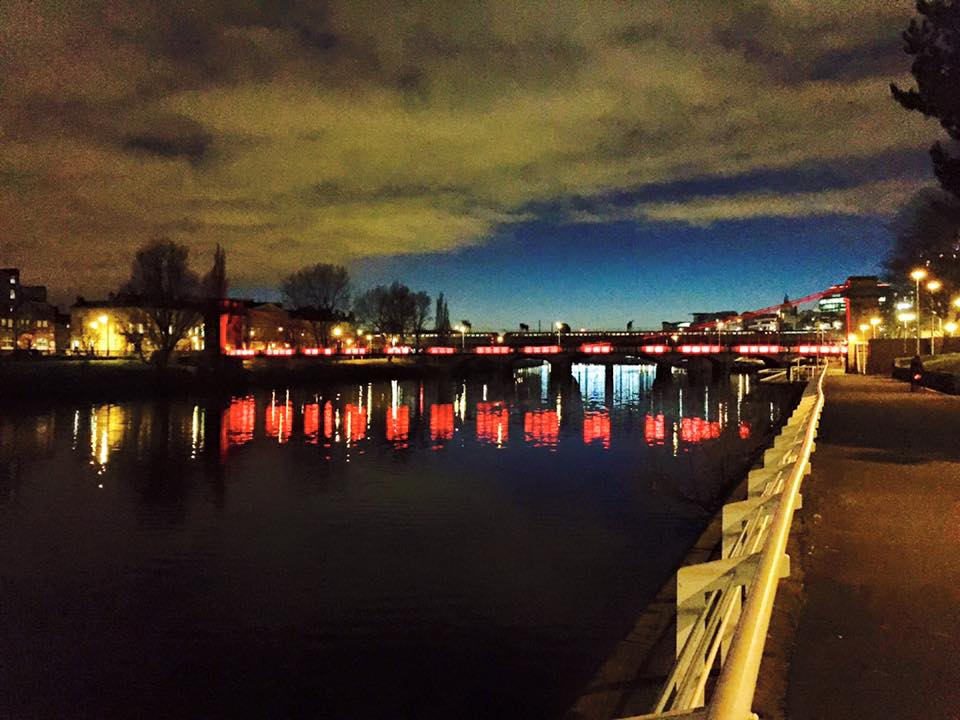Scottish Parliament Election preview: The end of Labour’s fortress in Glasgow?
Glasgow, sitting within ‘Red Clydeside’, has long been a Labour citadel, with the party historically weighing rather than counting the vote, such was their dominance. But elections in 2007 and 2010 showed that the City is nowadays willing to look elsewhere politically, with the independence referendum of 2014 accelerating the shift in support from Labour to SNP. Here, Murray Leith looks at the contests, and argues that Glasgow’s days as a Labour fortress are coming to an end.
To say that the Glasgow has been the bastion of traditional Labour (or left wing, but let us not confuse the issue) politics in Scotland would be an understatement. In 1999, at the first elections to the Scottish Parliament, Labour took all the constituency seats across the Glasgow region. While such dominance meant that they took no additional list seats, the results, with a spread of four SNP, one SSP (the redoubtable Mr. Tommy Sheridan), one Tory, and one Liberal Democrat only illustrated the strength and supremacy of Labour in Scotland’s second City. Labour had long been the majority party on the City Council and dominated all political life. The expected balance of Scottish Politics seems almost established with Labour strong at the core. However, for those who looked more closely (and now with the benefit of hindsight) the underlying base strength of the SNP as a potential challenger, both regionally and across the constituencies, was apparent even then.
Though the SNP lost ground in 2003, gaining only three list seats in Glasgow, by 2011 the cracks in Labour’s seeming dominance had become clear. By 2011, albeit with redrawn constituencies that saw Glasgow lose one constituency seat, Labour retained only 7 seats overall, with five constituency and two regional MSPs. The Liberal Democrats had disappeared, although Glasgow’s regional solitary Green, Patrick Harvie remained. The Tories, likewise, had their rising star Ruth Davidson returned for the Glasgow list. However, the SNP had become the co-majority party for greater Glasgow, with four constituency and three list seats. How times, and Scottish politics, had changed!
When considering the potential, and seemingly expected collapse of Labour support, on the back of the 2014 Referendum vote (where a majority of Glasgow voters voted Yes) and the 2015 Westminster election with the SNP sweep of all of greater Glasgow’s generally corresponding seats, such an event does not seem to be coming out of the blue. Nonetheless, it heralds an ongoing sea change which has taken place over a very short period of time. In 1999, Labour stood strong and triumphant. Taking a political beating in 2007, it seemed to stand strong once again in the Westminster elections of 2010, yet 2011 told us a different story. In 2016, Labour is very much fighting a rearguard action; seeking to maintain a much diminished and probably distant second place status, against a Tory party that claims to be offering the only real opposition in Scotland, if not in Glasgow. To remain that opposition Labour must do well in Glasgow. For if the traditional party of the Scottish left cannot do so there, then the Tory narrative may well have some validity. Although, given the nature of political rhetoric, it may well be the usual pre-election bluster from a party that is happy not to be the sole villain of the Scottish piece for once.
Yet the question does remain, who will win these seats and what will the ‘new’ MSPs of Glasgow look like? – Will it be a case of new times and new faces, or one of back to the future? A very short examination of the constituency races and the party lists for the regions illustrates that it may well be the latter, and whatever the fortunes of Labour, new faces will be few, far between, and probably Tory.
Starting in a seat once held by the ‘Father of the Scottish parliament’ Donald Dewar (Labour) we see his successor Bill Butler, MSP from 2000-11, vying for a comeback against Bill Kidd of the SNP, who beat him in 2011 by a mere 7 votes. So whoever wins, neither of these will be new faces. Technically the SNP’s most marginal seat, the 2015 Westminster election does not bode well for Labour, as is the case across all of Glasgow. Bill Butler is fifth on the Glasgow Labour list.
James Dornan, SNP MSP from 2011, and deputy Whip since 2012, is a former Glasgow City Councillor, where he led the SNP group until his election to the Scottish parliament. His Labour opponent, Soriya Siddique is currently a member of Glasgow City Council, elected in 2012. She has spoken up on issues of science and the need for greater involvement in science subjects by women and young people. Dornan’s lead of 5.5% in 2011 is unlikely to dissipate given the expectations of 2016.
Sandra White, an SNP MSP since 1999 took this constituency seat from Labour in 2011, increasing the SNP share of the vote by 14%, with a lead of 882 votes. A well-known left wing member of the SNP, she has campaigned strongly on social justice issues, seeking better treatment for asylum seekers and she holds the SNP Deputy portfolio for that area. She has also been involved in the Stop the War coalition, and faces off against Labour’s Michael Shanks, a charity worker and Labour activist. Interestingly, Patrick Harvie, the long serving Green MSP is also running in this constituency and that may affect upon the support of both Labour and the SNP.
Glasgow Maryhill and Springburn
An area that strongly voted Yes in the 2014 referendum, it is represented by Labour MSP Patricia Ferguson, who has served since 1999. With only 36% turnout in 2011 Labour took 48% of the vote ahead of the SNP’s Bob Doris (elected on the regional list). With both facing off again, this is a seat Labour must hold if it has any chance of maintaining a constituency presence but forecasts do not look good.
Johann Lamont, former Scottish Labour Leader and MSP since 1999, faces off against popular SNP Junior Minister Humsa Yousaf, elected to the regional list in 2011. Her 623 vote lead from 2011 looks shaky in 2016, and may explain why she stands second on the Glasgow Labour regional list.
Paul Martin holds this seat for Labour. An MSP since 1999 he was previously a Glasgow Councillor and comes from Old Labour stock being the son of the former Speaker of the House of Commons, Michael Martin. Martin has taken over 50% of the vote since 1999 and again represents one of the seats Labour must win, or even come close to winning, if it is not to look like a poor imitation of its former self in the next Scottish Parliament.
Won by the SNP’s former Westminster MP John Mason in 2011, seeing off Labour stalwart Frank McAveety by a majority of 586, with a turnout of only 37.7%. Despite John Mason’s sometimes controversial views on same-sex marriage and creationism, this is a seat the SNP expect to hold. His Labour opponent, Thomas Rannachan does not appear on the Labour Glasgow region list.
Held by the SNP’s Leader and First Minister Nicola Sturgeon no-one expects this seat to go anywhere but into the SNP win column. She retains significant popularity not only within Scotland, but also in the local area, where she is seen as a stalwart MSP (even given her other duties).
Held by the Scottish Labour Co-operative MSP John Kelly, an MSP since 2007, this constituency has, accepting boundary changes, been Labour since 1999. His SNP opponent Clare Haughey is a mental health nurse and Trade Union convener of Unison and thus represents the nature of the SNP challenge to Labour in Glasgow. Should she win, she would be one of the few new faces from greater Glasgow in the Parliament
Regional Seats
This overview of the nine constituency seats in the Glasgow region has only focused on Labour and SNP candidates because the likelihood of there being any other winner at the direct vote level is almost non-existent. Yet this is not the case for the regional list candidates. Despite the SNP’s much touted #BothSeatsSNP social media campaign, the chances of the SNP sweeping all 16 seats are statistically slim (not impossible; it is a brave blogger or academic that states the impossible in a post 2015 Scotland).
The Conservatives are pinning their hopes on increasing their presence in the next parliament by having Ruth Davidson shift over to the Lothian region (and hopefully win) and standing Professor Adam Tomkins (of Glasgow University) in Glasgow in her stead. A darling of the Tory No Thanks brigade, who came to wider public prominence during the Independence Referendum, he is likely to become the ‘usual’ single Tory elected from the Glasgow list.
As for potential other winners, Liberal Democrat fortunes look unlikely to improve anytime soon in Glasgow or the West, and those elected from the constituency list are likely to be drawn from the Labour and SNP lists. The funny thing is, if one examines these lists closely. The names seem very familiar. Topping the SNP list are Nicola Sturgeon, Humza Yousaf, Bob Doris and Bill Kidd – all familiar names and faces indeed. It is not until we get to fifth that a less well-known name occurs. At fifth place on the SNP list we find Rhiannon Spear, SNP Youth National Convenor, and not a constituency candidate. Given the projected SNP support, and the likelihood of those above her getting elected in their own right, she may well join her more famous colleagues, but it could be close if it is another SNP sweep. On the other front, Labour has learned its history lesson, and included people on both the constituency and regional lists so as not to lose any more of their big hitters. Much like the SNP list, the first nine names on the Labour list are all current or former MSPs; Anas Sarwar, Johann Lamont, James Kelly, Pauline McNeill, Bill Butler, and Patricia Ferguson. It is not until number seven that we get James Adams, a Glasgow City Councillor. In the light of recent polls and given the likelihood of Labour winning any constituency seats even retaining one would seem like a victory at this stage. Therefore, we may well see the same old faces, but unlike 1999, Labour and the SNP may well be swapping positions re who is in charge, but also on who got elected and how.
—
 To find out more about the 2016 Scottish elections in your area, visit the Democratic Dashboard.
To find out more about the 2016 Scottish elections in your area, visit the Democratic Dashboard.
Note: this post represents the views of the authors and not those of Democratic Audit or the LSE. Please read our comments policy before posting.
—
 Murray Leith is a Senior Lecturer in Politics at the University of the West of Scotland.
Murray Leith is a Senior Lecturer in Politics at the University of the West of Scotland.






 Democratic Audit's core funding is provided by the Joseph Rowntree Charitable Trust. Additional funding is provided by the London School of Economics.
Democratic Audit's core funding is provided by the Joseph Rowntree Charitable Trust. Additional funding is provided by the London School of Economics.
Scottish Parliament Election preview: The end of Labour’s fortress in Glasgow? https://t.co/OBd0de4H0l
Also by @Murray_Leith -a preview of the @ScotParl contests in Glasgow https://t.co/dFcGeSkpOe (illustrated by a talented local photographer)
Scottish Parliament Election preview: The end of Labour’s fortress in Glasgow? https://t.co/oODZ491hNS
Scottish Parliament Election preview: The end of Labour’s fortress in Glasgow? https://t.co/8gD7NBp0SA
Scottish Parliament Election preview: The end of Labour’s fortress in Glasgow? https://t.co/On90ZKwAfG
Scottish Parliament Election preview: Could Labour’s fortress in Glasgow end next Thursday? https://t.co/Rxu7JVlQds
Scottish Parliament Election preview: The end of Labour’s fortress in Glasgow? https://t.co/UvUBvcCtbv
Scottish Parliament Election preview: The end of Labour’s fortress in Glasgow? https://t.co/BeIrkaWlZk https://t.co/xYGqqVMg5e